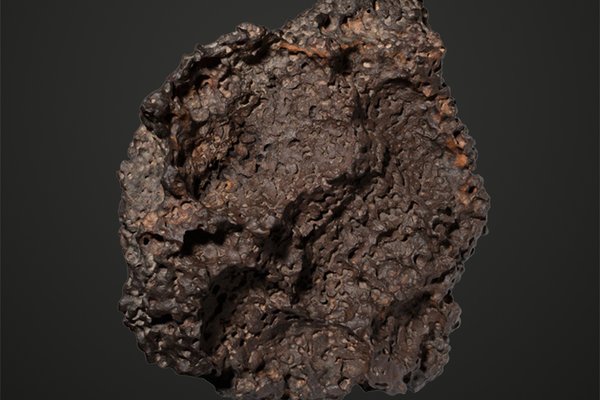The Molong Meteorite – a visitor from outer space.
The Molong meteorite has a fascinating story, from when it was found on 25th September 1912, by Mr Edward Farrell on his property 20Km west of Orange, to the final resting place of a cut half in the Australian Museum in 1934.

© Geological Survey of NSW
I have just returned from Bathurst, where I gave the annual Somerville Lecture, on ‘The Molong Pallasite meteorite – a visitor from outer space’ at the Australian Fossil and Mineral Museum. I was also given the honour of opening their new ‘Space Rocks’ exhibition featuring meteorites and astrophotographs from the collection of Mr. Ray Pickard from Bathurst Observatory.
The Molong meteorite is in the Pallasite class of the Stony-Iron meteorite group. The pallasites are thought to come from the mantle/core boundary of their parent asteroid in the Asteroid Belt between the orbits of Mars and Jupiter, 400 million Km from the Sun. This class represents only 1.6% of observed falls, so is quite rare. There are only 5 known pallasites from Australia and about 50 from other parts of the world.
The Molong meteorite weighed 105.22 Kg, and measured about 38 x 35 x 30 cm. Old records say it was “’about the size of a milking pail’. There is about 49% of nickel-iron and 51% olivine (magnesium iron silicate) in the meteorite, and the iron has about 9% nickel. Its density is 3.36 tonnes per cubic metre.

© Australian Museum
The cut and polished Molong pallasite shows translucent, rounded crystals of yellow-green olivine up to 2-3 cm embedded in a continuous meshwork of silvery nickel-iron. Sometimes pieces of this type of meteorite are sliced thinly and illuminated from behind to give a ‘stained glass window’ effect. They are the most beautiful of all meteorites.
The Molong meteorite was purchased by the NSW Mines Department for five pounds and presented to the Geological and Mining Museum, Sydney. A plaster cast of the whole meteorite was made at the Australian Museum in 1913, and is still in its collection. The meteorite was cut in halves in 1913 at the Department of Engineering of Sydney Technical College, needing 141 hours of cutting and using 41 pounds (18.6 Kg) of abrasive carborundum grit.
In 1934, during a partial exchange of collection items between the Australian Museum and the Geological and Mining Museum, the Australian Museum received a 52.16 Kg sawn half of the meteorite. As it is prone to rusting it was kept in a vat of oil to prevent corrosion. This meteorite half is still in the Australian Museum collection, but there is a mystery, as no-one knows where the other half of the meteorite has gone.
By 1916, a flaw-free piece of olivine from the meteorite was cut into a ‘smaller than pea-sized’ peridot gemstone. Our records show that the stone was, unfortunately, lost many years ago and has not since been tracked down. In the 21st century, record keeping practises are now much improved, allowing us to digitally database the registration numbers and locations of our extensive and important mineralogy collection.
Ross Pogson, Collection Manager, Geosciences
Australian Museum Research Institute
Further Reading
- Graham, A.L., Bevan, A.W.R. and R. Hutchison, 1985. Catalogue of Meteorites, 4th edition, British Museum (Natural History), p240.
- Hodge-Smith, T. 1939. Australian Meteorites. Memoir 7, Australian Museum, p. 20
- Mingaye, J.C.H, 1916. Notes on the Molong Meteorite, Records of the Geological Survey of New South Wales, Volume 3, No. 9, 161-165.
- Molong Argus, Volume 9, No. 1117 9th March 1917, page 1, “The Sole of a Dead World”.










